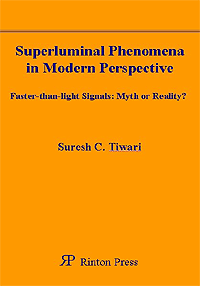|
 
Any phenomenon that involves
faster than light speeds is termed a superluminal
phenomenon. Electromagnetic wave propagation in the
material media having anomalous dispersion is the oldest
example that has been revived in the recent years.
Typical wave solutions like Bessel beams have been shown
to possess superluminal speeds, and evanescent modes are
also thought to belong to this class of waves.
Hypothetical particles proposed in 1960s named as
tachyons travel faster than light. Then there are
astrophysical objects namely the quasars that also have
apparent superluminal speeds. In quantum mechanics,
typical quantum correlations in the classic EPR
(Einstein-Podolsky-Rosen) settings have been the subject
of experimental investigations. For the observed
nonlocality for spacelike distant correlations there
exists the intriguing possibility of superluminal
signals. Recent interest in quantum information science
has made this subject very crucial and important. And
finally there are cosmological models in which the
velocity of light was much greater in the early universe
than its present value.
Resurgence of interests in
superluminal phenomena during last decade, its
acceptance in the mainstream science establishment, and
mystical presentations at popular level led to the
project of this monograph. A comprehensive review,
balanced critique with open mind, and delineation of
deep physical insights constitute the objective of this
monograph. This is a unique endeavor encompassing whole
spectrum of the superluminal phenomena at one place.
Due to the controversial nature of
the subject some basic concepts in relativity and
quantum theory are reviewed, and a brief account of the
Sommerfeld-Brillouin theory of wave propagation is
given. Elements of information theory in Ch.6 and
the standard model of cosmology in Ch.8 would
facilitate the reader to comprehend the discussion on
quantum teleportation and variable speed of light
cosmology respectively. Extensive and up-to-date list of
key references should enable the reader to pursue the
subject further. Hopefully the style of the presentation
would stimulate the reader to think afresh in this
exciting field. |

